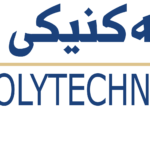On Wednesday, the 3rd of May, 2023, the Rector of the University, Prof. Dr. Edrees Muhamad Tahir Harki Received a representative of IVY of Japan and a delegation of Toyota Company in Iraq.
The guest delegation included Takashi Sito, Project Manager in Iraq and Syria at IVY, Mr. Hussein Hanari, theToyota Human Resources General Director in Iraq, and Mr. Sarok Nuri, Relations Director of the company.
In a meeting where the Vice Rector for Scientific Affairs, the Dean of the Erbil Technology College and Mr. Farhad Othman, the Relations Coordinator with the guest delegation, and the Automotive Department lecturers were present, the Rector briefed the guest delegation about the strategy of working of the Automotive Technique Department which is the only department in all over the Kurdistan Region. In this term, the guest delegation expressed their pleasure to work with the Erbil Polytechnic University and discussed about cooperating the department in terms of laboratories, logistical assistance, training courses, coordination with the academic staff of the department.
Furthermore, in collaboration with the Toyota Company, both parties decided to prepare a proposal to assist the department and its graduates in terms of opening training courses, providing logistical requirements and finding more job opportunities for the department alumni in the Toyota Company in Iraq.
It is worth mentioning that a number of graduates of the automotive technical department have been provided with job opportunities in the company and according to the proposal, their number will be increased.
After the meeting with the Rector, the guest delegation accompanied by the Dean of the Erbil Technology College, the Head of the Department, and the Technical Automotive Department lecturers visited the department, halls, laboratories, and workshops.





